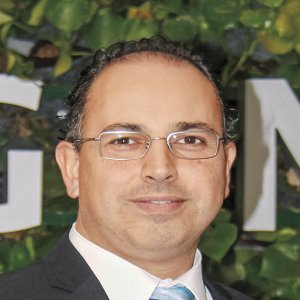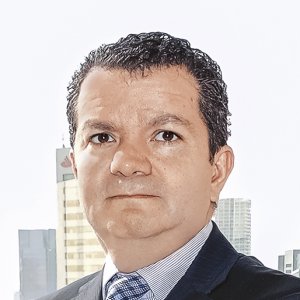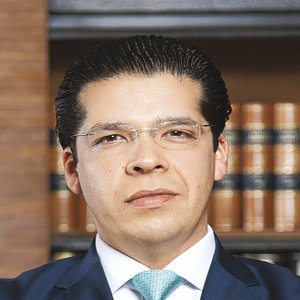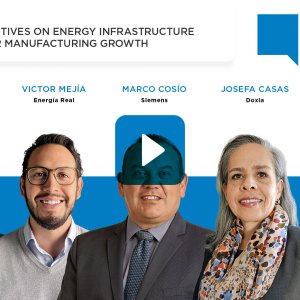Secure Electricity Supply Fuels Competitiveness

STORY INLINE POST
Q: What is the status of Nestlé’s RE100 goals?
A: We have been in constant negotiations with different players in the energy sector because we are fully committed to reaching our RE100 goals (in which a group of companies have pledged to go 100 percent renewable in their electricity consumption), but we also have to achieve them in a competitive way. Mexico stands out because its market is just opening, and although qualified suppliers are fighting hard to gain a share of the market, CFE is fighting back with very attractive proposals to keep its industrial customers. Securing constant electricity supply is one of the most important factors we consider when looking at our possibilities because our industrial processes cannot be under constant threat of unwanted changes in the electric input. Sourcing from renewables is as important as competitiveness or security, because any change in costs will not only affect the business, it will affect final prices as well, therefore making Nestlé more or less competitive against other brands.
Whoever offers the best combination of supply security and competitiveness will most likely work with us. In 2013, Enel was the best option, but as other energy solutions become more competitive, with higher and steadier production availabilities, we are starting to consider a wider spectrum of possibilities. At Nestlé, 80 percent of our electric-energy consumption has come from renewable sources since 2013. We expect to close negotiations before the end of 2017 to reach our RE100 goals, while keeping our business healthy.
Q: How can the government help industrial companies such as Nestlé to increase their clean-energy mix?
A: What we need most is legal certainty from our suppliers. We, as energy buyers, know that the long-term commitments of our energy suppliers mean they have a long-term business to meet our demand in the years to come despite changes in the market. We know that the market will change, but no one can say how much, and we need to have security of supply no matter what. That is the crucial point in which the country’s legal framework should help industrial energy consumers.
Another important point on which Mexico has to focus is not only in energy generation, but in energy transmission and distribution. Much attention is being focused on distributed generation, but the truth is that most industrial consumers are and will remain for a long time, dependent on centralized generation, which is the safest and most secure energy income we can have. This is not only about electricity, but also heat. Industrial companies with industrial processes need large quantities of heat. To produce it, natural gas is required. Mexico needs a safe and sufficient grid that dispatches the much-needed energy, electricity or natural gas for all industries, and we still do not have that. Having a sufficiently large distribution grid, both for electricity and natural gas, is beneficial for everyone. It is not a matter of making us, the industries, more competitive, it is a matter of making Mexico, as a country, more competitive.
Q: How does Nestlé evaluate natural gas virtual pipelines as a feasible energy supply?
A: We have considered the use of virtual pipelines for natural gas but the truth is that those virtual pipelines are much costlier for us than standard natural gas pipelines or even LP gas. The cost of compressing and decompressing, as well as maintaining such infrastructure, is significant and there comes a point at which compressed natural gas stops being economical or even clean. Compressed natural gas can be a solution for energy consumers that have lower requirements but we must also consider it a transitional alternative. Many companies are still producing heat through oil derivatives because of lack of access to natural gas; that is why delivery of compressed natural gas through virtual pipelines has become a solution in the market. But it is still more expensive than the use of oil derivatives. Talking about competitiveness, the ideal is to have the certainty of the supply offered by a natural gas pipeline and Mexico should fight to offer this certainty.
Q: How is Nestlé working to reduce the environmental impact of its heat consumption?
A: As heat is such an important part of our energy consumption, we are looking for ways to implement efficiency measures, or other heat-production techniques, when viable. First, we look to reduce energy usage, diminish losses, or even change whole processes. Then, we consider implementing other sources of renewable energy like solar thermal or biomass. For instance, at our Lagos de Moreno plant, we have used parabolic solar concentration since 2014 as a way to preheat the water that goes into our boilers. In Toluca, our plant has a biomass boiler, and at many others we are taking advantage of heating processes that would otherwise be wasted to preheat other processes. Although this is not directly related to the energy market, it shows ways in which we are working to make our energy consumption more efficient and varied to make us not only more environmentally friendly but also more competitive.
Nestlé has very clear goals for carbon emissions reduction. To achieve these goals, we are committed to having full consumption of renewable electricity and to implement energy-efficiency projects to decrease our energy consumption. We closed 2016 with reductions of around 47 percent in energy consumption and 66 percent in carbon emissions, both per ton produced, compared to 2017 levels.
Q: What are Nestlé’s goals for the future in terms of sustainability, as it nears compliance with the RE100 commitment?
A: Nestlé is committed to the RE100 main goal, but we have to admit that electricity is only 25 percent of our energy consumption, and the remainder is heat. To further reduce our environmental footprint, Nestlé’s objective is to become a carbon-neutral company by 2030. It is a very ambitious goal, even more so for an industrial company with big heating demands. We do not know how feasible it is but this goal is our aspiration and it motivates us every day.
We have an organizational unit that takes care of making our processes more efficient. We are also about to sign a voluntary agreement with CONUEE to look for innovation and cutting-edge technologies in the processes used at our plant with the highest energy demand, and in this way, create a blueprint that can be used at other plants. In this voluntary agreement, we are going to commit to a 14.5 percent reduction in energy consumption in the coming three years. The agreement also illustrates our commitment to the governmental goals of reducing greenhouse gas emissions for 2025 and 2050. Therefore, it is not only important because of the reduction in energy consumption and environmental implications, but because of competitiveness and our desire to offer the best nutritional products, with the best environmental performance.
This reduction is achievable. We have already done it. Not long ago, I performed a study in which I found that if we had not started to implement energy-efficiency measures 10 years ago, we would be paying MX$330 million extra every year, which would translate into less competitive products. During the last 10 years, we doubled our production levels with only 5 percent more energy consumption, with 1 million fewer cubic meters of water, and with 122,000 fewer tons of CO2. That is efficiency, that is producing more with less and that is also a very tangible example of how much energy efficiency can help a company in the long term.
Nestlé is a global food company, vulnerable to climate change like all food producers. Our purpose is to improve quality of life and contribute to a healthier future. We do that for individuals and families, for communities and for the planet. Therefore, we have to be very active in favor of actions that not only mitigate but reverse climate change. We have been present as a company for over 150 years and we want to continue for 150 years more























